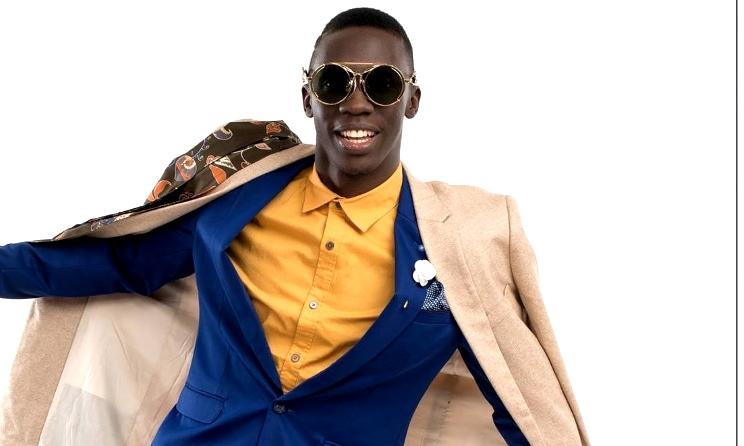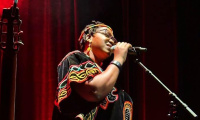The warning signs within Uganda’s music recording industry
If you hold the dream of spending your life promoting music and sharing it around the African continent, then you have something in common with Ugandan music journalist Douglas Lwanga and veteran DJ Erycom. I had a telephone conversation with each of them to talk about the state and future of the recording industry in Uganda.
 Douglas Lwanga has provided coverage of Uganda’s music scene for over a decade
Douglas Lwanga has provided coverage of Uganda’s music scene for over a decade DJ Erycom says that artists adopt new sounds to maintain their fan bases
DJ Erycom says that artists adopt new sounds to maintain their fan bases
Lwanga has a strong passion for music and, since 2010, has hosted some of the most popular TV music shows in Uganda. He currently works with NBS TV.
According to him, the Ugandan music industry is still male-dominated. He says that women are not given enough opportunities and a conducive environment in which to develop.
“Unfortunately, there is no gender balance in the industry. The males take up to 60% and there are very few notable females currently sharing the top spots." He says this is because most female musicians “are not taken seriously by male stakeholders.”
“From my experience, the men have always had it easier to get their music played in clubs and on mainstream media, and this is because they can easily interact with the DJs and presenters without any problems. But for the women, it is somehow complicated."
"To make change happen, female musicians must be empowered to be immune to the barriers which have been created by music promoters, DJs, music producers, radio or TV presenters," he says. “Musicians like Vinka, Irene Ntale, Sheebah, Winnie Nwagi and Spice Diana have proven resilient in recent times.”
As Lwanga speaks with so much enthusiasm about the Ugandan music industry, I sought to find out how his interest first came about.
“My love for music goes way back to when I was in high school. Upon graduating, I was so sure that I needed a career within the arts and that’s how I got my first job as a TV producer and camera man in 2008, at Record Television Uganda.”
His many years of interacting with local artists have enabled him to gain a comprehensive understanding of the industry. In his opinion, the current popular sounds in Uganda have been borrowed from elsewhere.
“The most popular style amongst our artists is from West Africa, followed closely by Jamaican dancehall. Hip-hop is not as popular but it exists. And the reason for this is because our producers realised that these are the styles that the public love, so they went ahead and made huge hits for our local artists.”
Lwanga anticipates that the future of the country’s music recording industry will see it become even more influenced by foreign styles.
“The largest consumers of music are the youth,” he says. “They are exposed to various music streaming platforms such as YouTube, where they listen to sounds from all over the world. So it would be self-sabotage for a producer or an artist to continue purely working with traditional sounds, which most of the youth cannot relate to anymore.”
Ketebul Music boss (and AFRIMA juror) Tabu Osusa goes further, predicting the extinction of Uganda’s original sound.
“Previously, I ranked Uganda as the country with the most original music content,” he says.
“But, over the years, the only constant element in their music has been the melody. Kadongo Kamu, Uganda’s oldest mainstream music genre, is no longer being used a base for their music; instead, the producers are using Jamaican reggae and ragga dancehall beats.”
Osusa says this scenario will eventually see the disappearance of the Kadongo Kamu beat, along with the bakisimba dance which goes with it. “If they continue as they are, the sound will disappear due to its current misinterpretation.”
Established musician DJ Erycom believes that the music recording industry will still appreciate traditional styles like Kadongo Kamu in the future. However, he concedes that this might be only a small element of the industry, and he agrees that popular urban music in Uganda will continue to show more foreign influences.
“Given my 11 years' experience and knowledge of the industry, I am not surprised that the recording industry is currently being dominated by foreign sounds. Show biz is real and musicians would naturally tend to explore the interest of their biggest supporters.”
DJ Erycom confirms that the largest consumers of music in Uganda are the youth. He says that, generally, artists tend to “go for the new sound to satisfy their fans and to remain relevant in the industry.”
He says that seeking inspiration from other sounds is not wrong, as long as those doing it do not lose their own musical identity in the process.
“Uganda has a lot of sounds which musicians can use as guidance for their music,” he says.
“An example is the musician Daxx Kartel. He fuses the Kadongo Kamu beat with the Jamaican ragga dancehall beat. This technique has earned him a fanbase of all ages. Another artist is David Lutalo. He is not a Kadongo Kamu artist, but his music has its elements.”



















Commentaires
s'identifier or register to post comments